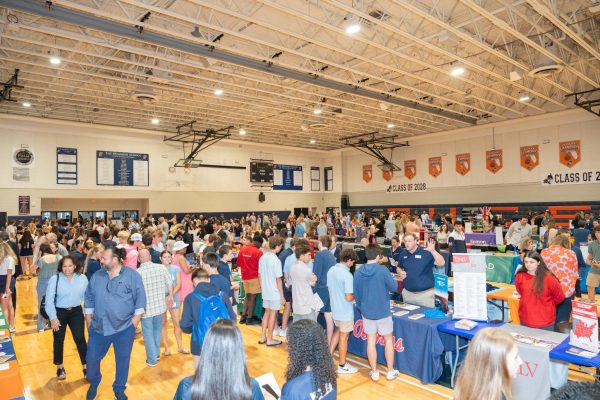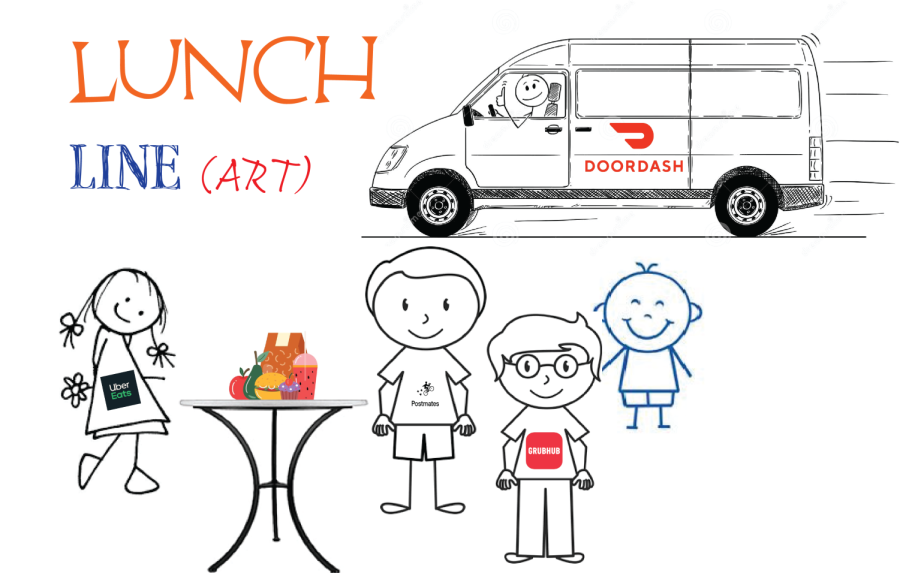Editor Examines Lunch System
The administration made a rather controversial decision earlier this school year that forbade students from ordering food to be delivered to campus for lunch. However, as proven from last year, students should be able to have food delivered to the school.
This change comes after a full school year last year where students had the ability to use companies like UberEats, DoorDash, GrubHub and other food delivery services to order their lunch. The temporary change last year was made due to the impact of COVID-19, according to Dean of Students Mr. Kevin Jacobsen.
One reason that ordering outside food has been prohibited this year is because of the complications for faculty. Mr. Jacobsen points out that food deliveries can be difficult for those in the office to handle.
“It is too much for our front-of-house faculty and staff to work, as well as doing their normal duties,” he says. “Being bombarded with deliveries is just not functional.”
However, this predicament has an easy solution. Rather than the drivers bringing the food directly into the office, the school can set up a table — or any type of food drop-off station— outside of the office for the drivers to place a student’s food, just like there was last year. This seemed to be successful last year, as it makes it so that no disturbances arise in the front office.
Ultimately, the most substantial reason, according to Mr. Jacobsen, is that food deliveries can raise security concerns. Parents are allowed to drop off food for their child because they do not pose any safety threat, but bringing strangers onto school grounds is an entirely different scenario.
“It creates a security risk with strangers being on campus, and with our policies of providing food to our students, it’s just not needed,” Mr. Jacobsen explains. “Last year, we had a new system for students to order food, and there were some growing pains with that. We just wanted to make sure that students had lunch every single day if there was an emergency where they forgot it, and we didn’t allow students to go off campus for lunch.”
While the concerns of a security risk are extremely understandable, allowing deliveries last year makes even less sense. Last year should have been even more of a concern with tighter COVID-19 protocols, as any stranger on campus ran the risk of spreading COVID-19. Moreover, the pandemic did not minimize any security risk that is not health-related. Security itself was not impacted by the pandemic, so policy should not have been altered because of it.
The chance of forgetting a lunch could emerge as a problem occasionally, so this year, Mr. Jacobsen and faculty added a new implementation to the lunch system. A student can buy a lunch that another student does not pick up for $5. This may sound great in theory and should eliminate the need for food deliveries, but in practice it has its complications. Some students do not carry cash, so they will not be able to buy lunch. Furthermore, there may not be enough lunches for the amount of people who need to buy lunch. Ordering lunch for delivery would easily fix these dilemmas.
While administration presents valid reasons that food deliveries should not be tolerated, there are ways that the school can ease the process for faculty. The current lunch system works, as has been proven throughout the months, but it still has issues that can be solved with food deliveries.

Charlie Spungin is a senior and has been a member of The Pharcyde for four years. He is the Editor-in-Chief and formerly the Copy and Sports Editor....





